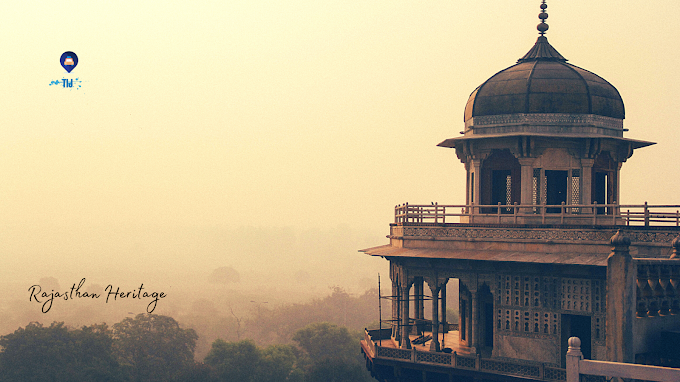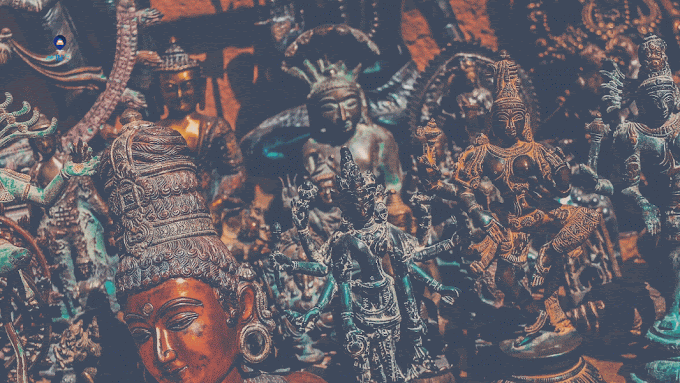Jaigarh Fort ( Historic Palace )
At whatever point Man Singh I (late sixteenth century) or his successors warred and won gold, silver, gems and other goods, they accumulated it in the Jaigarh Fort. what's more, they had the dedicated Minas to furiously monitor their take. (Truth be told, legends reveal to us that the Minas were such severe watchmen that they let each new Kachhawaha ruler enter just a single time and pick one single piece for himself from the stunning heap!) Anyway, this fortune paid first for building Amber, at that point Jaipur and for a considerable length of time of extravagant living. Indian Government authorities attempted to recover anything that remained; they delved the spot in 1976 yet discovered nothing. Indeed they even depleted the three curved water tanks (in a patio while in transit to the northern finish of the fortress) in the expectation of finding the fortune there. Some state that everything was spent in building Jaipur while others guarantee that it is still there someplace.
The proclamation of the antiquated Hindu sacred writings, the Puranas, 'a post is the quality of a lord', more likely than not pose a potential threat in the brains of the Rajputs while building the Jaigarh Fort. The goal-oriented Jai Singh II at that point extended, redesigned and renamed it in 1726. what's more, since this fortification never fell in the hands of adversaries, it stands practically flawless right up 'til today.
Ride with JCR and Visit any Historic Place in Rajasthan. hire your private on rent in Car rental Jodhpur at JCR also Book your Tempo at Tempo traveler in Jodhpur Hurry Up! Book your Seat Now
The Location of The Fort
Jaigarh or the 'Stronghold of Victory' is roosted on Chile ka Tola (Hill of Eagles), 400 feet over the Amber Fort. The dividers of the post are spread more than three kilometers. When you enter through the monstrous south-bound Doongar Darwaza, you'll in a split second get a substantial vibe of Rajput sentimentalism. furthermore, in case you're fortunate, Thakur Pratap Singh, an attractive Rajput with a fine mustache will be around to reveal to you accounts of Jaigarh's famous past. The other access to the stronghold is through the Awani Darwaza in the east.
Main Attractions of The Fort
Jaigarh Fort is an astounding accomplishment of military engineering. After you enter, head straight for the immense gun Jaivan roosted on a pinnacle. Gauging 50 tons with an 8m barrel and a direction of about 20km, it is said to be the world's biggest gun on wheels. Such was its strength that it took four elephants to swivel it around on its hub. Be that as it may, shockingly (and fortunately!) it was rarely utilized. In spite of its great capability,
It has fragile scrollwork of winged animals, foliage and a thundering elephant at its mouth. Javan was test-terminated once by Jai Singh in 1720 when the gun ball arrived at Chaksu about 38km away! also, its effect was colossal to such an extent that a lake framed at the spot and numerous houses fallen in Jaipur.
The cannoneer passed on following the terminating before he could even bounce into water. (It is compulsory for the cannoneer to hop into the water to stay away from the monstrous effect, as there's constantly a water tank adjacent to the gun.) No big surprise adversaries didn't ever focus on Jaigarh. There's even a notification here which gladly says, "in view of the solid protection framework, the board and the foresightedness of the rulers, the foe never set out to enter the post."
The Jaigarh Cannon Foundry
The Jaigarh gun foundry, worked by Bhagwan Das in the sixteenth century, is one of only a handful of hardly any enduring medieval foundries on the planet. It has a heater, machine, apparatuses and an assortment of guns. It was Bhagwan's received child, Man Singh I, who brought the mystery of black powder from Kabul in 1584 where the last was the president of Akbar's military. Before long guns started to be made in Jaigarh, a lot to the disappointment of the Mughals who stayed discreet to themselves since the time they utilized it to battle the Lodis and Rajputs in 1526 (check History of Delhi for additional). There's a point called Damdama (signifying 'nonstop terminating'), where there used to be a battery of ten guns situated to check any moving toward armed force. This faces the Delhi Road. This persuaded Man Singh was furtively getting ready for a confrontation with his Mughal partners.
Seven Storeyed- Diya Burj
the turret of lights from where you get an all-encompassing perspective on the city of Jaipur. Additionally intriguing is the water supply and capacity arrangement of the stronghold, a genuine wonder of arranging. Sagar Talav, with octagonal bastions and enormous dams, is one of the post's fantastic supplies. The shortage of water has consistently practiced the resourcefulness of the Rajasthanis, likewise representing the presence of the few baoris or baolis (step wells) in the state. There are a few sanctuaries inside the fortress. The tenth-century Shri Ram Hari Har Temple houses pictures of three divine beings – Rama, Vishnu, and Shiva. It has an intriguing entryway. Close by is the twelfth century Kal Bhairava Temple
Stay tune to get More Content at TSACR
Booked your Seat in JCR to Visit all Over in Rajasthan at JCR Cab Services






0 Comments